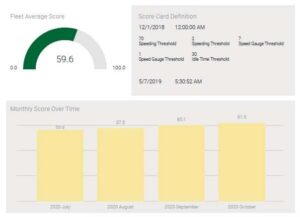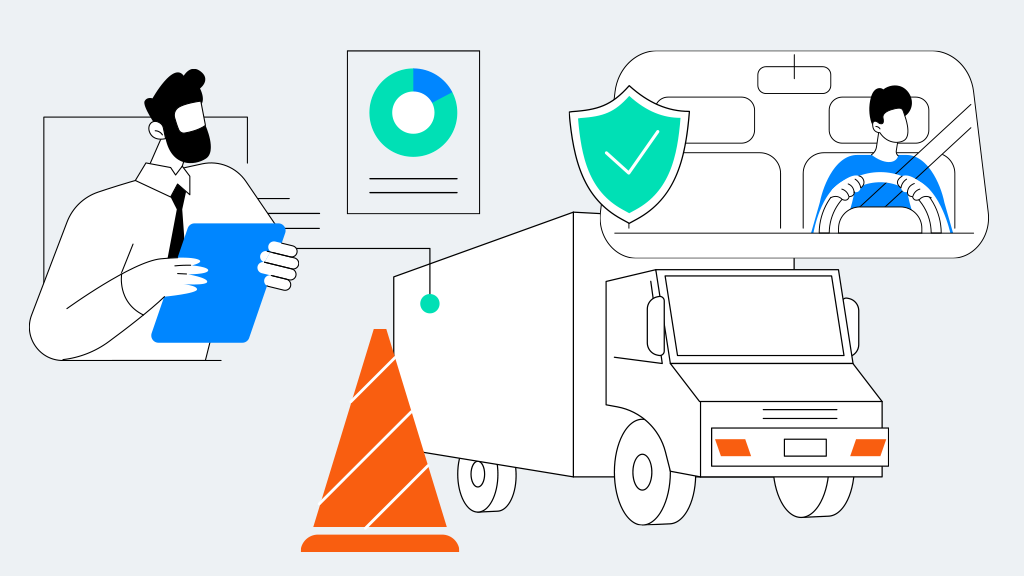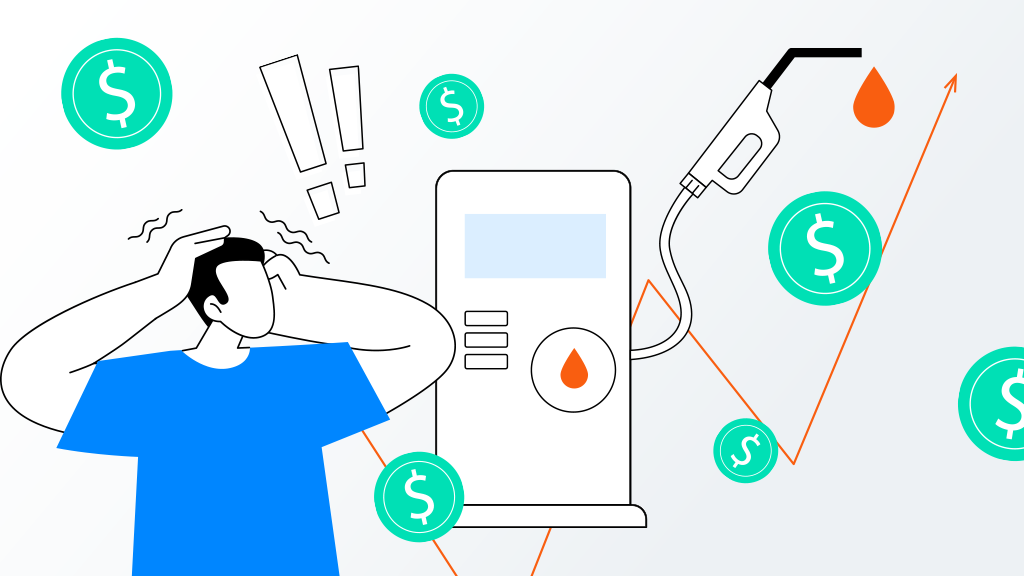You already know that fleet safety training has a direct effect on your operations, brand and profit – and especially your employees. The safety of your drivers is at stake every day. It’s your responsibility to oversee the health and safety of each of them.
You may already have a holistic program in place, but in order to maximize safety and the success of your program, you’ll need to follow a few best practices to get your drivers on board.
Create a Clear and Transparent Training Policy
First, establish and reinforce a culture of safety from the top down. This can be done by creating a clear fleet safety training policy that communicates that driver safety is a primary organizational value. Your commitment to evaluating and improving company-wide protocols demonstrates how seriously you take their safety.
Giving your drivers a clear and objective definition of your company’s safe-driving policy is imperative to success. There’s no faster way to lose driver engagement – and acceptance of the new training – than to surprise them with corrective actions or unexpected penalties. Create a physical training policy document that covers:
- The types of driving behaviors that you’re expecting, as well as the behaviors that won’t be tolerated
- Fleet safety certifications and safe driver training programs that you’ll make available to your drivers
- The technology you expect drivers to adopt, as well as training material so they can learn how to use them
- Guidelines for handling incidents when they do occur
- The safety metrics your drivers should care about, as well as details on how they’re performance will be evaluated
Make sure every driver has access to this document, and require them to review it during the onboarding process.
Tell Drivers How You Plan to Measure Fleet Safety Metrics
As a manager, you set the expectations. Think about what safety gaps you may have and how to address them. And as a team, what are you working toward? Setting specific metrics and goals for what a company-wide safety looks like will help articulate your expectations and give your team something to strive for. Your drivers will feel more comfortable if they understand the ask and if you have a plan in place. You can even run the metrics by your seasoned drivers so they have a say in the fleet safety KPIs.

Give Drivers a Seat at the Table
Choose a select group of drivers – those who are most engaged with the company’s safety initiatives and have a genuine interest in technology make great candidates for a pilot program. Give these drivers a first look at changes and additions to your fleet safety training program, and have them pilot new programs and courses. This way, you’ll be able to test programs before rolling them out to your entire mobile workforce. You will also get valuable feedback that will help you adjust ineffective training programs and increase adoption.
Read: Everything you need to know about fleet safety
Provide Ongoing Fleet Safety Training Opportunities
Your drivers will also want to know what’s in it for them. Investing in safety training and safety certifications not only benefits your business, it also provides drivers with a career development path. Keep the door open for ongoing training and certification, not just a one-time training program during the onboarding process.
If you are concerned about the cost of ongoing safety training and certifications, think about this: the price of a single collision can range anywhere from $14,000 to $225,558. Why not take steps to prevent preventable accidents?
You’ve probably seen it all – from falling asleep at the wheel, swerving due to distracted driving and absent-minded speeding. With the proper training and safety coaching tools, you can both reinforce safer, more alert driving and correct distracted driving in real-time. The right combination of training and tools can help you prevent accidents and protect your drivers’ livelihood.
Invest in Truly Proactive Driver Safety
Drivers also benefit when your fleet safety program includes technology that prevents them from getting injured on the road.
Safety scorecards are an effective way to get real-time visibility into each driver, as well as your driving culture as a whole. They are an integral part of how you can gain fleet-wide insights and benchmark individual operator safety.
And new mainstream tools are leveraging artificial intelligence (AI) to increase safety. An AI video camera solution with in-cab alerts can reduce accidents by 60% and reduce accident-related costs by 86%. Lower accident-related costs lead to reduced insurance claims, and decreased risks for your drivers and brand.
No matter what technology you choose to deploy, make sure your drivers are properly trained on how they’re used and what they can do to provide protection.

Incentivize and Celebrate Success
According to FleetOwner, 79% of employees say they work harder when they feel recognized. 83% say that rewards make them feel more engaged with their job. Offering rewards doesn’t just improve driver behavior, it helps drivers feel as if they are benefitting from your safety procedures as well.
Here are some tangible outcomes of successful completion of fleet safety training that you can reward:
- Training graduation
- Reduction in bad behavior (speeding, excessive idling, harsh turns, hard braking, distracted driving)
- Most improved driver of the month
- Top driver leaderboard
- Reduction in accidents
- Reduction in insurance costs and claim payouts
- New certifications and professional development achievements
The right driver training program not only makes your drivers better and safer, it also makes them more focused. With increased safety, clear expectations and the right tools for success, your drivers will have a higher level of comfort while on the job. A brief lapse in paying attention can end up being a reason for an accident.



![Episode 50 Thumbnail Erin celebrates building the fleet community with 50 episodes and 11K followers on LinkedIn [Podcast]](https://intellishift.com/wp-content/uploads/2021/02/DriverCoaching_Photo.png)



